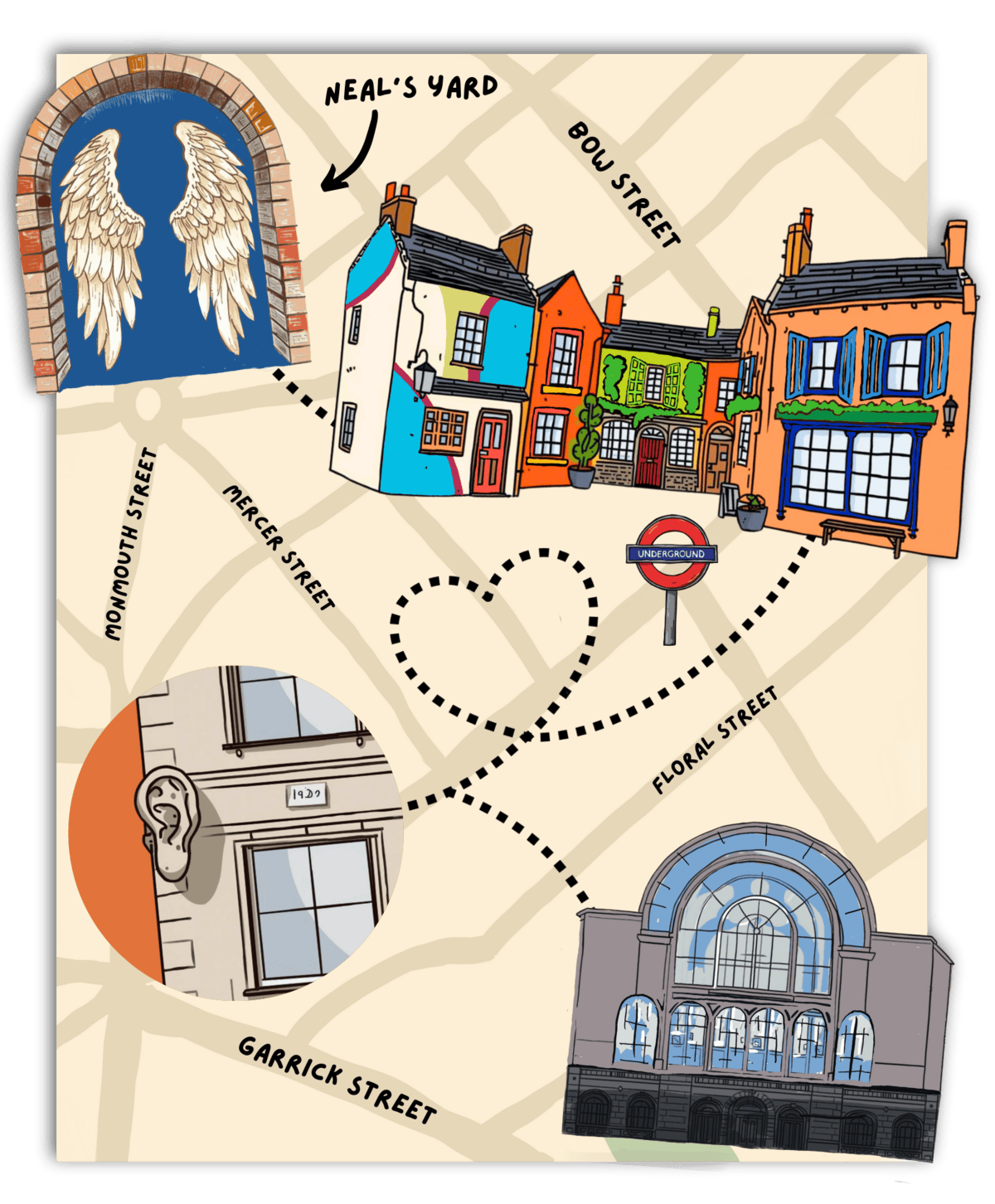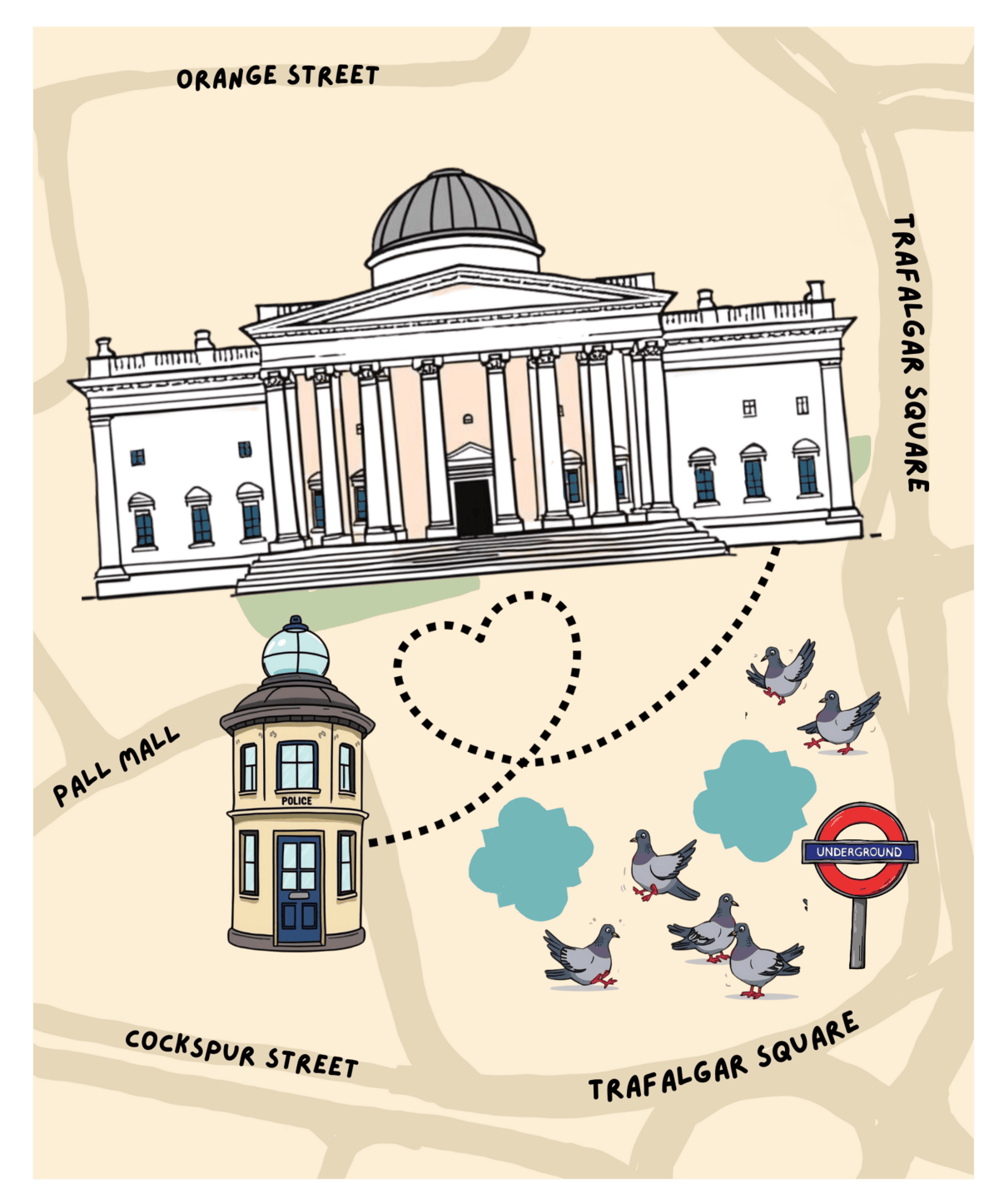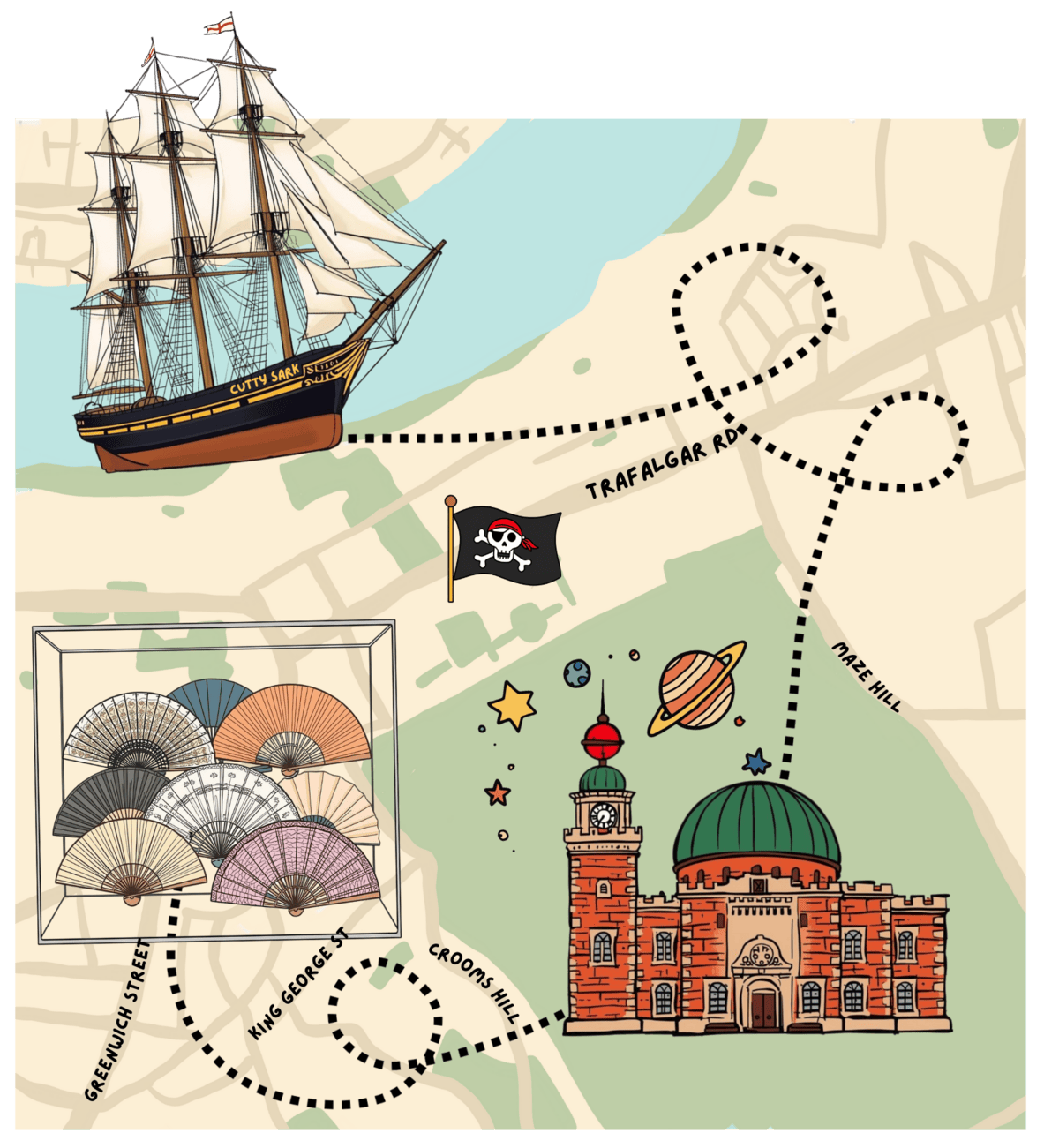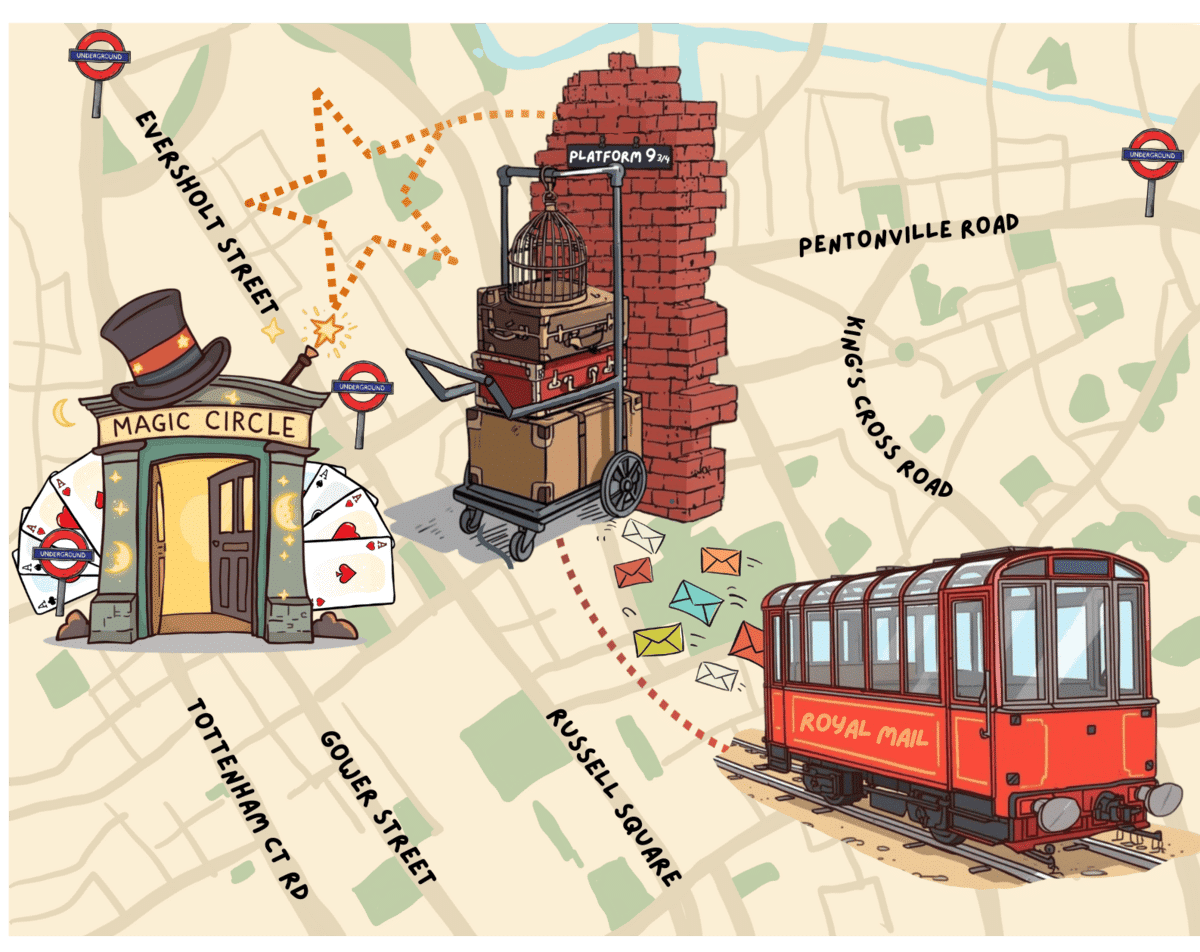Keen to explore more of the city? Take yourself off on a ‘Side Quest’ and inject some fun into your day out, says David G Taylor
While London’s main attractions are undoubtedly at the top of your to-do list, you might want to factor in a smidgen of spare time to veer off the typical tourist trails. There are plenty of hidden highlights worth taking a detour for – and thanks to social media, these mini adventures now have a name: they’re called ‘Side Quests’.
Shopping with a twist
Shopping is one popular pastime, with Covent Garden known as one of London’s favourite destinations. Famed for its covered ‘markets’, street entertainers and a mixture of big brands and designer boutiques, it’s possible to while away the hours browsing for bargains here. But take a break from all that spending and have your camera at the ready!
Side Quests: Capture a snap of a monument marking London’s strangest junction. The Seven Dials district boasts a roundabout topped with a tall Doric column that functions as a sundial. Seven streets converge on the Sundial Pillar in a sunburst pattern, cleverly laid out in the 17th century. A reproduction of the original removed in 1773, the pillar is embellished with six sundials. The long shadow cast by the column acts as its seventh,
hence the name Seven Dials.
It’s a noteworthy spot that’s mentioned in literary works by John Keats, HG Wells, Charles Dickens and Agatha Christie, and today it also offers a multitude of unique photo opportunities. Take a walk down Floral Street, for instance, and you’ll find the walls have ears… quite literally. See if you can spot two wall-mounted sculptures that were created by British artist Tim Fishlock from casts of his own ears.

Nearby in colourful Neal’s Yard, just off buzzing Monmouth Street, there’s a rather touching piece of photogenic graffiti art. A 2017 mural marking the 20th anniversary of the death of Princess Diana depicts her as Mary Poppins floating down from the sky on an umbrella. She greets her grandchildren, Prince George and Princess Charlotte, with the words: ‘You can be as naughty as you want, just don’t get caught.’ This irreverent artwork was created by ‘Bambi’, the pseudonym of a media-shy street artist dubbed ‘The Female Banksy’.
Portals to another dimension?
If you’re an ardent art lover then head to The National Gallery in Trafalgar Square to see great works of art by Gainsborough, Reubens, Rembrandt and van Gogh. Just around the corner at the National Portrait Gallery, there’s portraiture in all forms, including the fashion photography of a 20th-century icon and ‘King of Vogue,’ in Cecil Beaton’s Fashionable World (9 Oct-11 Jan).

Side Quests: While visiting these galleries, look out for the door to the smallest police station in London, tucked in the corner of Trafalgar Square. Accommodating two prisoners at a time, the sculptural structure was built in 1926 to monitor demonstrations and was disguised inside the hollow base of an ornate lamp post.
Nearby, at the back of St Martin-in-the-Fields, is a bizarrely distorted church window. Take a closer look and you’ll notice its bowed and warped grid forms a holy cross. Looking like a portal to another dimension, East Window was designed by Iranian artist Shirazeh Houshiary. Meanwhile, just a few steps away on Adelaide Street is a unique bench where you can rest in the company of a British literary great. The 1998 design by British artist Maggi Hambling is titled A Conversation with Oscar Wilde and bears the quote: ‘We are all in the gutter, but some of us are looking at the stars.’ It’s proved controversial for reasons including its unflattering depiction of Wilde.
Magic, mystery and scientific marvels
If you are visiting the epic Pirates exhibition at the National Maritime Museum in historic Royal Greenwich, you can discover the myths and modern-day realities of piracy. Meet the characters of popular culture from fictional Captain Jack Sparrow to the real-life Edward ‘Blackbeard’ Teach. However, there’s so much more to explore.

Side Quests: Stop by the Royal Observatory to see the bright red Time Ball drop at 1pm, a tradition helping seafarers keep accurate time since 1833. Pop into The Fan Museum to see more than a thousand years of historic examples, including some advertising ocean cruises and a mermaid (circa 1900).
Next, you might want to book tickets for a Cutty Sark Rig Climb (until 31 Oct) and discover what it must have felt like to work on the famous 1869 tea clipper, the Cutty Sark, as it traversed the seas of the Victorian-era empire.
The area around King’s Cross boasts many strange and wonderful attractions, from the famous luggage trolley of Harry Potter’s Platform 93/4 at King’s Cross Station, to the mind-blowing science displays of the Welcome Collection. However, experiences off the beaten track include ‘real magic’.

Side Quests: Visit the Magic Circle Museum as part of a Magic Circle Tour: The Real-life Wizards’ School!. Tour the headquarters of this secretive 120-year-old society for magicians, see posters and artefacts, hear stories and witness some magical illusions. Not far away, you could discover some of London’s best-kept secrets: a vast network of subterranean tunnels you can visit at The Postal Museum. Ride the 100-year-old Mail Rail train (Tue-Sun) or book
a guided 1.2km Tunnel Walk exploring parts of the railway not normally accessible. See rare stamps, including the Penny Black, and learn about the tragic history of postal ships.
Ancient London awaits
St Paul’s Cathedral is a major draw to lovers of history and Sir Christopher Wren’s incredible architecture, who’ll relish exploring the iconic dome and the Whispering Gallery. However, the cathedral sometimes offers visitors its own form of Side Quests with chances to see secret rooms and areas not normally open to the public. Right now, in fact, there’s an opportunity to take the 141 steps up to the Triforium, a gallery hidden above the cathedral arches.
Side Quests: On the St Paul’s Cathedral Triforium Tour, you’ll get to explore the Triforium’s library and trophy room, witness jaw-dropping views from atop the Geometric Staircase and see The Great Model, an ornate 17th-century scale-model of an unrealised Wren design proposal in wood and plaster, once pitched to King Charles II.
If your desire for hidden historical highlights of the City is not satiated, then how about the Roman Temple of Mithras? Its remnants, and a selection of Roman artefacts, await after a short excursion to the London Mithraeum at Bloomberg SPACE.
This interesting cultural hub showcases findings from the excavation of one of the UK’s most significant archaeological sites. On the way, you might try spotting
the mysterious London Stone, an unimposing landmark behind its own stone enclosure. The limestone rock, which probably dates back to the Jurassic period, is situated opposite Cannon Street Station. Although the stone’s function remains unknown, records of it date back to 1100.
Since you’re in the vicinity, you could also visit London’s Roman Amphitheatre. Two thousand years ago, crowds would have flocked to this arena to catch public executions and brutal combat sports featuring wild animals and gladiators.
Buried for centuries, archaeologists only discovered these ruins in 1988 during work to build the Guildhall Art Gallery, under which it is situated. The gallery and its collection of art treasures from 1640 onwards includes the exhibition Evelyn De Morgan: The Modern Painter in Victorian London (to 4 Jan).

